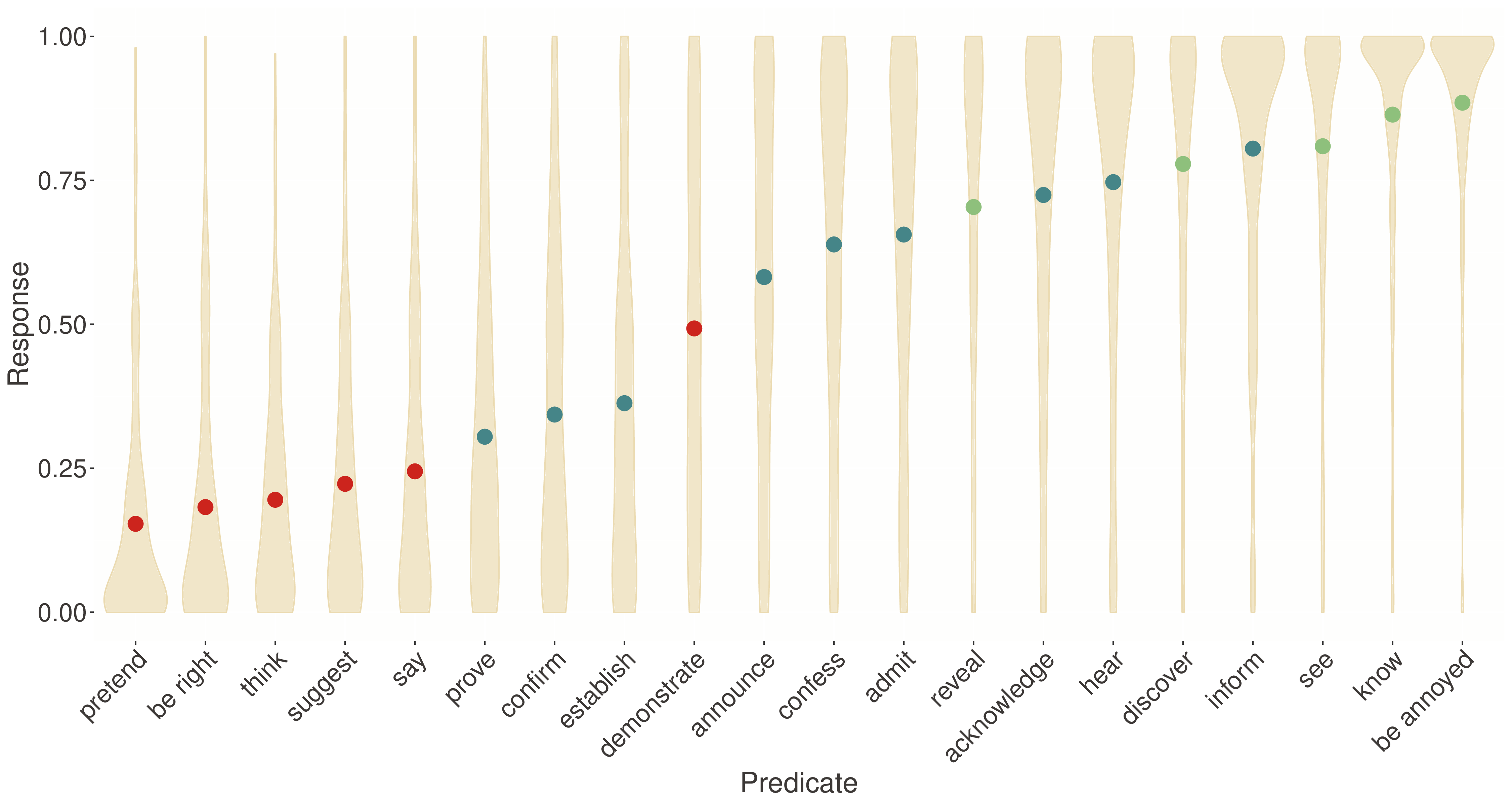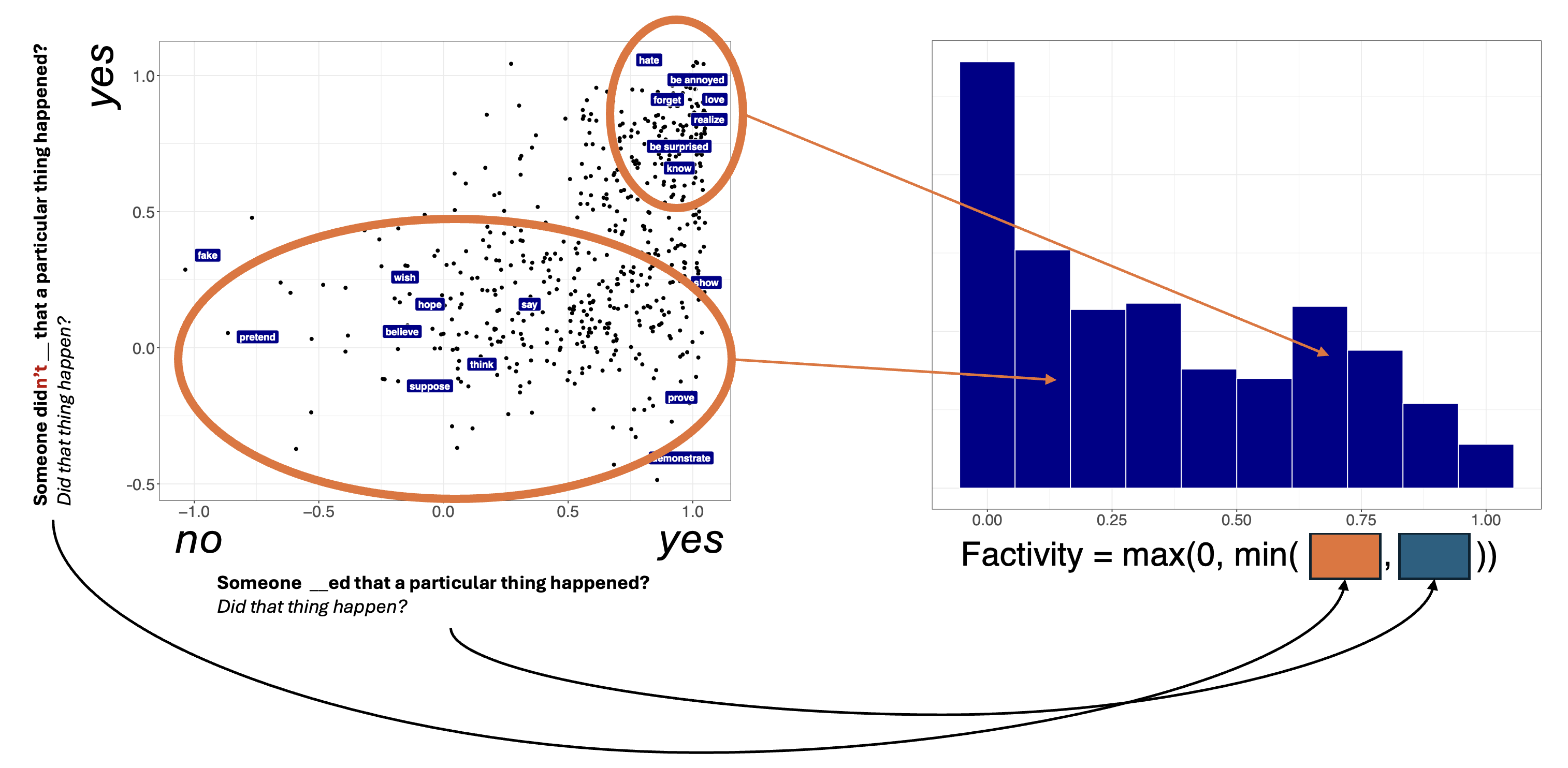An important distinction
There are two importantly distinct questions that we need to disentangle before moving on:
- Whether the gradience we observe suggests that there is no class (or subclasses) of factive predicates.
- Whether the veridicality inferences triggered by a particular expression containing a particular clause-embedding predicate are themselves gradient (whatever that would mean).
We’re going to be concerned with the latter question (i) because it is something PDS, we believe, is uniquely well positioned to ask, and thus asking it provides a useful demonstration of the PDS’s use; and (ii) because the former question has already been answered.
As discussed on Day 1, Degen and Tonhauser (2022) argue that no clear line separates factive from non-factive predicates. Mean projection ratings vary continuously from pretend (lowest) to be annoyed (highest).

Kane, Gantt, and White (2022) later showed that this gradience is likely due largely to task effects and measurement noise. They demonstrate that when one applies a clustering model to these data that accounts for noise due to various factors, many of the standard subclasses of factives pop out.
To get a sense for how these clusters appear in the data, we can look back at Figure 2, which we discussed on Day 1.

Remember that the idea behind this figure is that we could in principle derive a continuous measure of factivity by taking the minimum along the axes of the left plot in Figure 2 and rectifying.
The thing to note is that (i) there are clearly at least two separate “bumps” in the histogram; but (ii) the peak of the right bump is not at 1, as we might have expected. This is because some of these subclasses–e.g. the cognitive factives, which Karttunen (1971) observes to not always give rise factivity–appear to themselves be associated with non-necessary factive inferences, while other classes–e.g. the emotive factives, such as love, hate, and be annoyed–always do (up to measurement error and other sources of noise).
What explains the gradience internal to a class like the cognitive factives (which, again, we have known for more than 60 years should show this pattern)?